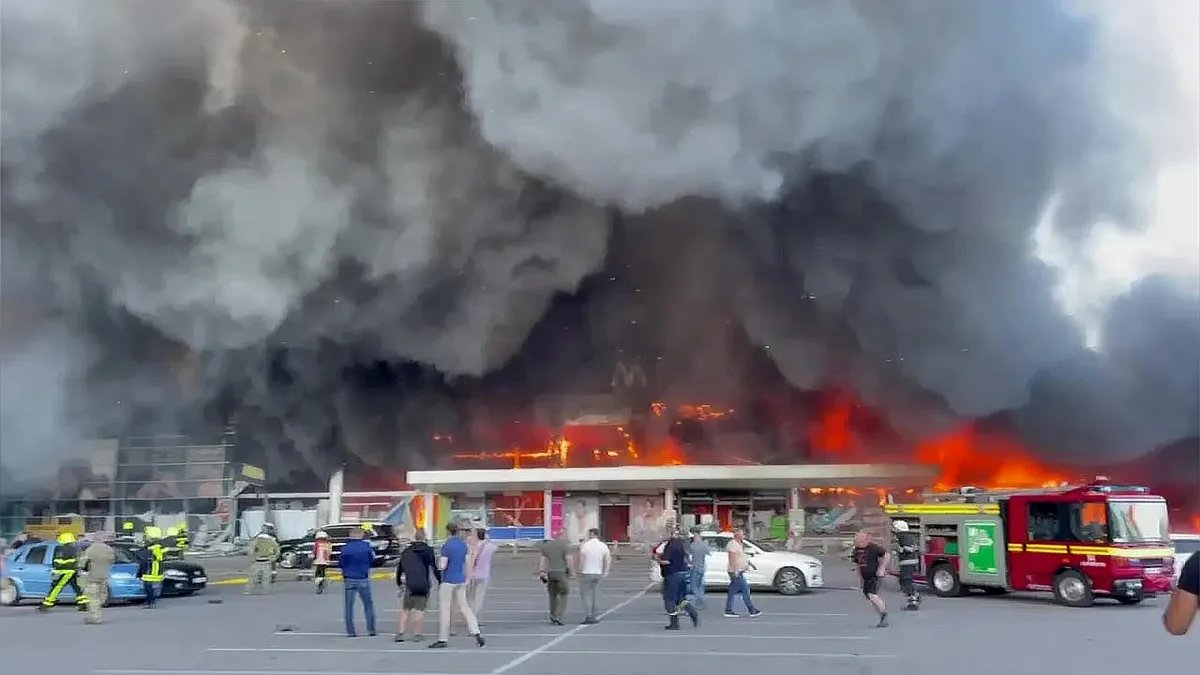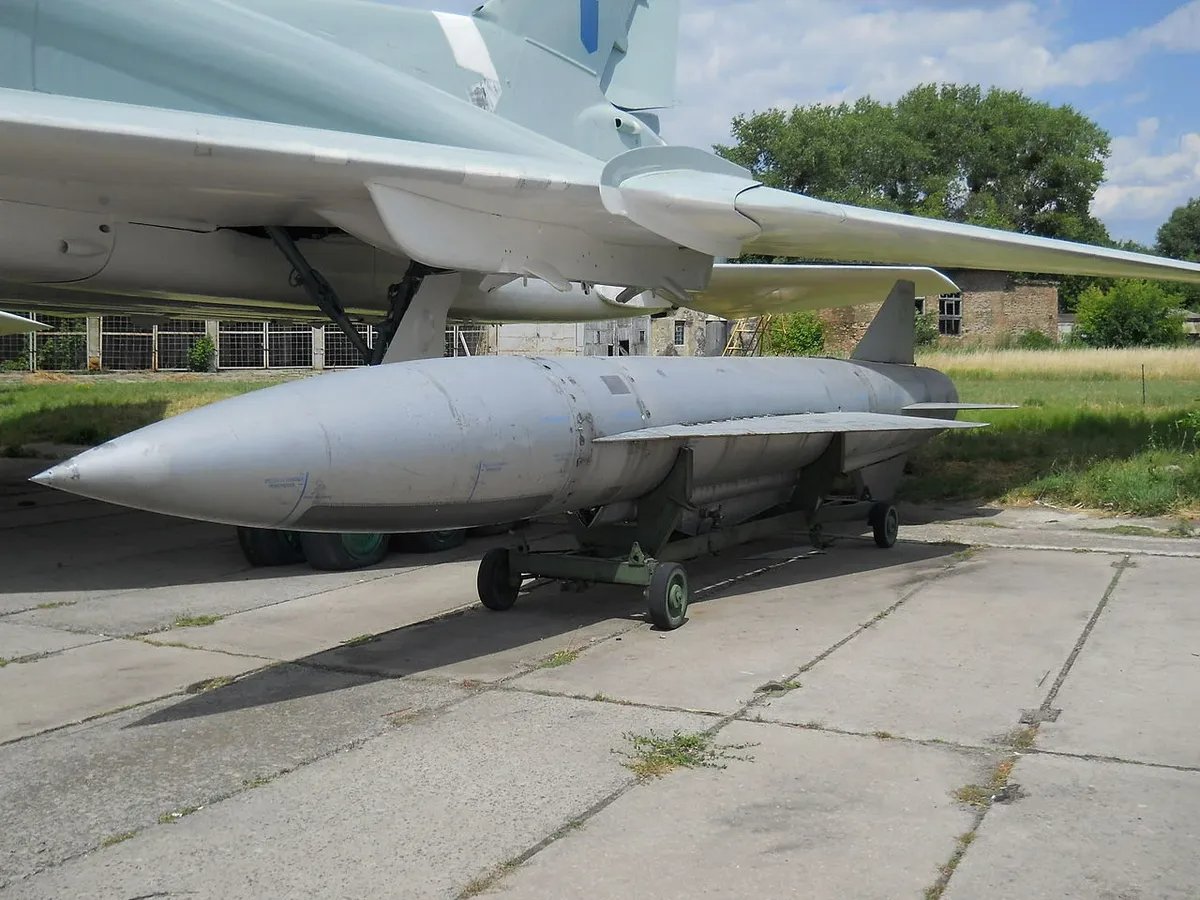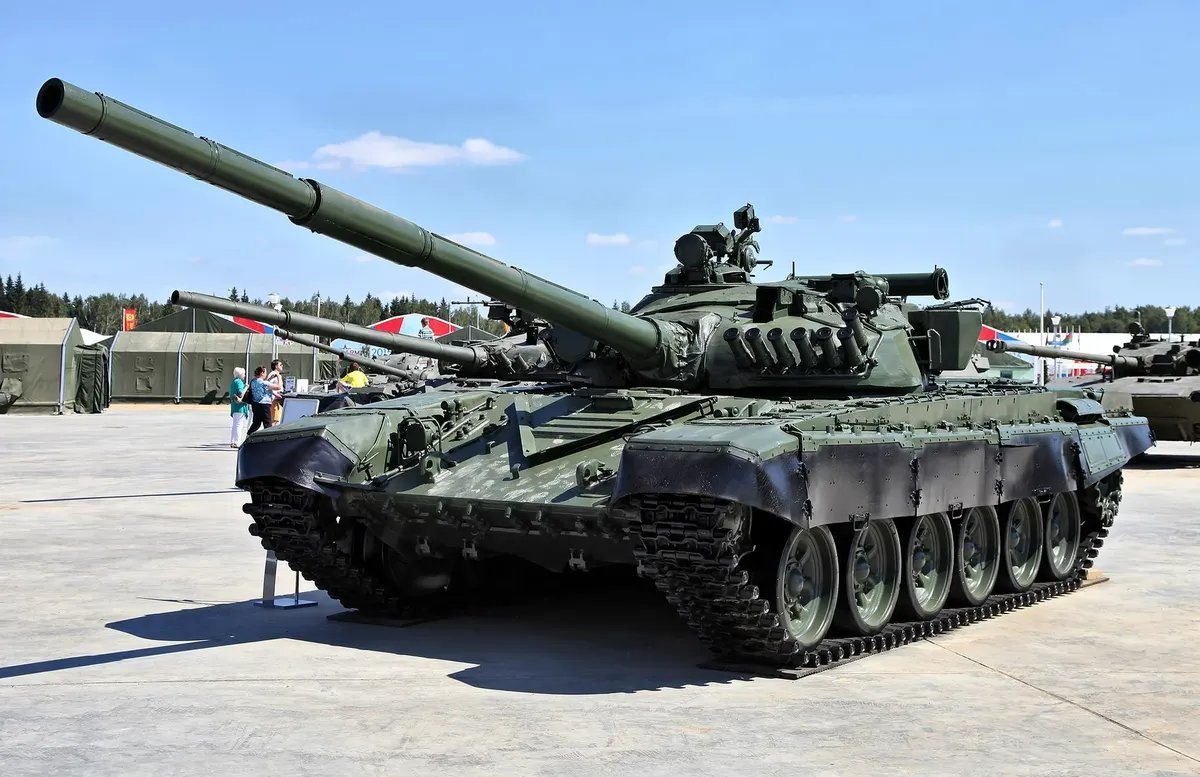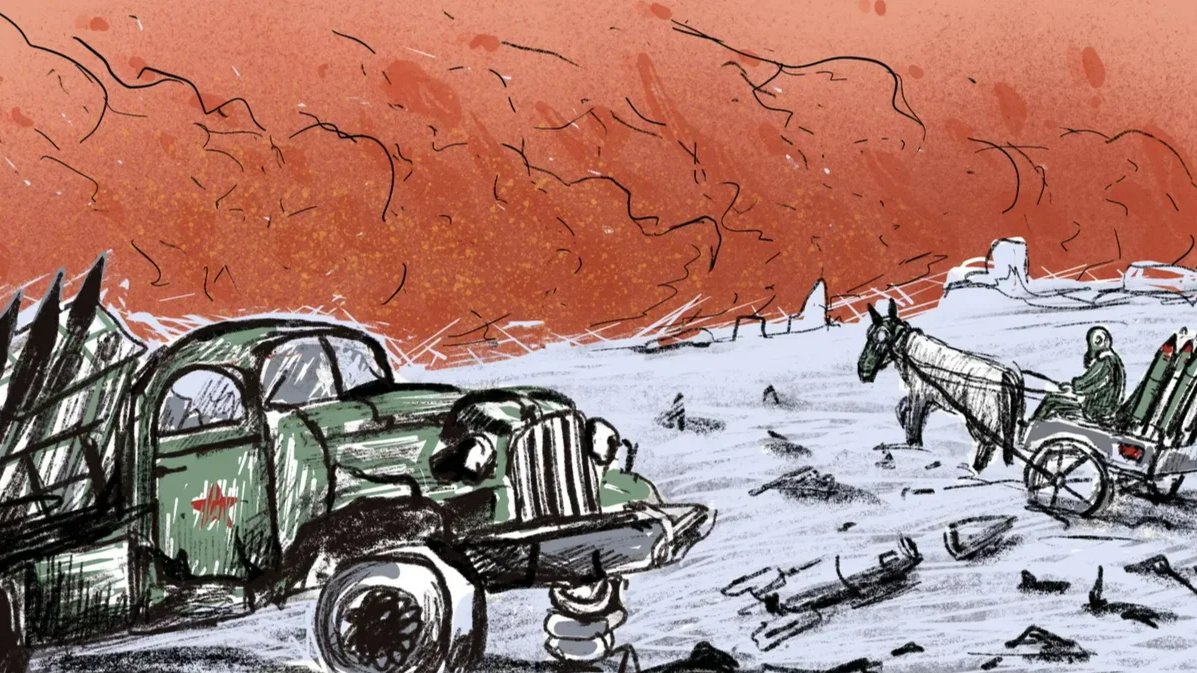According to the Global Firepower ranking, the Russian army has the second-most powerful military in the world. However, soon after the invasion of Ukraine, it started to display a surprising lack of modern weapons. Instead of high-precision weaponry, Russia has been forced to deploy obsolete Soviet equipment, which poses a danger both to the locals and the soldiers themselves.
We have researched the weapons that were in Russia’s arsenal before the invasion and compared this data to over 4,000 units of destroyed Russian equipment to find out why instead of using “fifth-generation weaponry”, the Russian army is using 1960s tanks and striking shopping centres with anti-ship missiles.
Nearly six months after the war began, the Moscow region hosted the annual International Military-Technical Forum Army-2022. According to the Russian president, who was in attendance, the Russian military equipment units presented at the forum “are years, and maybe even dozens of years, ahead of their foreign analogues, and they even surpass them when it comes to tactical and technical features”.
Actually, practically all the weapons Russia has used in real combat were inherited from the Soviet Union. And both parties to the conflict — not just Ukraine — feel the consequences of that.
Indiscriminate artillery attacks from Soviet multiple rocket launchers leave ghost towns such as Mariupol, Irpin, and Pisky in their wake. Meanwhile, the faulty design of 1960s tanks means the entire crew if the machine is hit.
In late April, experts with the Royal United Services Institute for Defence and Security Studies reported that Russia had depleted its reserve of high-precision weaponry. Due to the lack of Kalibrs and Iskanders, the most modern guided missiles in Russia’s arsenal, the army has had to bomb Ukrainian cities with Soviet equipment. The outdated navigation system on this equipment regularly causes civilian deaths.
On 9 May, Russia attacked Ukraine with Soviet Kh-22 missiles for the first time. Several missiles hit a shopping centre in Odesa, causing a fire that spread over an area of 1,000 square metres. Six weeks later, Kh-22s struck another shopping centre in Kremenchuk, killing at least 20 civilians and injuring 56. The Russian Defence Ministry did not confirm the attack, claiming that the fire actually started at a nearby ammunition plant that Russia was shelling.

A shopping centre in Ukraine’s Kremenchuk following the Russian missile strike on 27 June 2022. Photo: Wikimedia
The Kh-22 missile, designed in the 1960s, is aimed to destroy US aircraft carriers. According to military analyst Pavel Luzin, using these missiles in urban settings makes it much more difficult to hone in on the target; the margin of error can sometimes reach hundreds of metres. “The Kh-22 is incredibly old. Besides, it cannot be intercepted; it’s a high-speed air-launched missile that targets ships. Hitting shopping centres with these missiles is pure terrorism,” Luzin said.
According to an anonymous US intelligence officer, the accuracy of Russian missiles is just below 40%: two to three out of every ten will either fail to launch or explode mid-flight, two more will have technical issues, and another two or three will fail to reach their targets even if they do complete the flight successfully.

Kh-22 Burya (Storm) missile. Photo: Wikimedia
Ukrainian cities also come under daily artillery attacks. At the height of the war, Russia fired as many as 60,000 shots a day. (During the Chechen wars, this number did not surpass 30,000.)
Luzin said that since the start of the war, Russia has been using “the Soviet ‘wall of fire’ tactic to force the opposing army to retreat.
The enemy has to retreat because they have nothing to defend anymore: cities are becoming ruins, all fortifications and shelters are demolished.”
But Luzin pointed out that it is unclear “what to do with this wasteland next. All other countries have now abandoned the ‘wall of fire’ tactic, remembering the horrifying consequences of WWII. But Russia doesn’t know another way: it doesn’t have any other equipment or high-precision weaponry.”
The Soviet footprint
According to the International Institute for Strategic Studies’ Military Balance Report, Russia had over 80,000 military equipment units in its arsenal in early 2022. The army keeps 65% of its equipment in storage: experts told Novaya Gazeta. Europe that many of the units kept in storage are unfit for use.
“The Russian army is powerful only on paper,” Conflict Intelligence Team (CIT) analyst Kirill Mikhailov said. “There’s a war going on, and they won’t take BMP-2s and T-72s out of storage. Why?” (BMP-2s are amphibious infantry-fighting vehicles introduced in the 1980s; T-72s are battle tanks.) “The only rational explanation is they were cannibalised — that is, dismantled for spare parts — or stolen.”
The Military Balance Report –and the estimations of Novaya Gazeta. Europe — suggest that 87% of Russian weapons are Soviet-made. Artillery is one of the oldest types of weaponry used by the Russian army. The bulk of howitzers and multiple rocket launchers were designed in the 1950s and 60s. According to Luzin, these weapons are “non-ergonomic and imprecise, with a smaller range than their Western analogues”.
“If an army has enough high-precision weapons, they can target just the one building where an enemy is located,” explained Leonid Nersisyan, military analyst at APRI Armenia. “However, if an army is conducting shelling from cannon artillery, naturally, there will be large-scale destruction.”
Data on Russian equipment losses compiled by Oryx suggests that 45% of destroyed Russian equipment was made in the USSR. Oryx has published photographs of the damaged equipment, which is how these claims can be verified even though, according to CIT expert Kirill Mikhailov, the Oryx database is only about 70% complete. There are a total of 4,214 equipment units on record.
In addition to its obsolete artillery, Russia also uses poorly-modernised armoured vehicles, which also have taken a hit during the war in Ukraine. Data from Oryx and the Military Balance suggest that the Russian army may have lost more than 15% of its modern tanks in just five months of fighting. Because of its equipment shortages, Russia has started to use T-62 tanks, which the USSR stopped producing back in the mid-1970s.
Out of 13,500 tanks used by the Russian army, only 2,500 were produced after the fall of the Soviet Union. However, even the newer tanks cannot be considered modern, experts say. “Even if you modernise a Soviet tank, it will still remain a tank from the 80s,” Luzin said. “Even if you put in a new French infra-red sight and a communications system, there won’t be a massive increase in quality. No one can make a truly modern tank, there is nowhere to make one, so the only thing that’s left is to modernise Soviet models,” Pavel Luzin says.
All newer models of Russian tanks are modernised and produced from the model of the T-72 tank, which has a design flaw that can be fatal for the crew: an unprotected cockpit. That is, when a tank is hit, its ammunition explodes, cleaving the turret off the body and killing everyone inside it.

A T-72 Ural tank. Photo: Wikimedia
“The T-72 was designed with quantity in mind, so it has a minimal number of crew members,” Luzin said. “The tank itself is small, light and primitive. They produced a thousand of them each year for a mass advance. If only a third of them reach the target, that’s okay.”
Since the 1990s, Russia has been trying to remedy this flaw with the development of a new tank, the Armata. It was first presented at the 2015 Victory Day parade, but only test units are available so far. Armata tanks are not deployed in Ukraine.
‘By 2030, there will be nothing left of the military-industrial sector’
According to various estimates, Russia spends from $200 mln to $20 bln every day on the war in Ukraine. The sunken Moskva cruiser alone cost Russia $750 mln, Forbes Ukraine reported.
The lion’s share of Russia’s military spending is devoted to high-precision missiles. By mid-July, Russia had launched 3,000 missiles on Ukrainian cities, Ukrainian President Volodymyr Zelensky said. According to the Ukrainian Armed Forces, 190 of those were cruise missiles. Launching one Kalibr missile costs Russia about $750,000-$900,000. Using the more modern Kh-101 costs several times more.
Ukrainian intelligence suggests that Russia had already used about 55-60% of the high-precision weaponry it had before the start of the full-scale invasion. “In the first month, Russia launched dozens of missiles every day. Now, there are one-off strikes once a week,” Luzin said. “Ukraine sounds air-raid alerts every day, but only in areas within reach of cannon and rocket artillery. Russia has used up all the cruise missiles it produced over the past 15 years. It only makes 225 new missiles a year.”
Mikhailov echoed Luzin’s sentiment. “No one knows what will happen first: either they run out of munitions or their barrels get worn out, but sooner or later, the army will face these issues. Russia is unable to recover its losses. In 2021, 300 tanks were produced at [Russian] factories, while in the first six months of the war, Russia lost 964 tanks according to Oryx. So Russia produces four times fewer tanks a year that it has lost in six months.”
Russia suffered major losses both at the start of the invasion and at the beginning of the second stage of the war, the advance in eastern Ukraine. According to the Ukrainian Armed Forces, 25% of all equipment lost by Russia was destroyed in March, when the Ukrainian military wrecked 100 units of enemy equipment a day on average.
Now, in August, Russia’s advance has slowed: the scale of the losses is three times lower than it was before. Over the past month, Russia has not even made it six miles into Ukrainian territory. Experts do not rule out that a war of attrition or a frozen conflict could be on the horizon — though these are just two possible scenarios.
The Royal United Services Institute (UK) studied the trophy samples of 27 types of modern Russian weapons captured by Ukraine. Experts found over 450 types of imported parts produced in the US, Europe and East Asia.
Meanwhile, the Russian Defence Ministry regularly announces ambitious projects: military robots, laser weapons, hypersonic missiles. It takes dozens of years to develop modern equipment, but even Russian fifth-generation weapons turned out to be unusable in real combat.
According to our experts, the sanctions imposed by “unfriendly” states make it impossible for Russia to develop its military-industrial sector, which in many ways depends on foreign parts. “We don’t have even one type of weaponry 100% made in Russia,” Luzin said. “Even tank engines are produced at a factory that was equipped with foreign machinery during the 2011 modernisation. In two years, it will be unable to produce engines: there are no foreign parts. There is no other tank plant either. By 2030, there will be nothing left of the Russian military-industrial sector, only separate enterprises that will continue cobbling together what they still can.”
Join us in rebuilding Novaya Gazeta Europe
The Russian government has banned independent media. We were forced to leave our country in order to keep doing our job, telling our readers about what is going on Russia, Ukraine and Europe.
We will continue fighting against warfare and dictatorship. We believe that freedom of speech is the most efficient antidote against tyranny. Support us financially to help us fight for peace and freedom.
By clicking the Support button, you agree to the processing of your personal data.
To cancel a regular donation, please write to [email protected]

